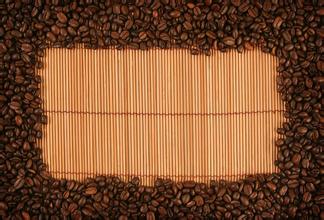How to adjust the thickness and thickness scale of the bean grinder is the most appropriate
How to adjust the thickness of the bean grinder?
Adjustment of electric bean grinder
The adjustment of the electric grinder is mainly aimed at two variables, the powder output and the grinding degree. These two variables are mutually dependent, and changing one of them changes the other.
Ordinary electric bean grinder will adjust the grinding and grinding time of the bean grinder according to the preset powder output (note that the grinding machine adjusts the powder output according to time rather than weight). If you are not satisfied with the quality of your coffee, the first thing you need to do is determine whether the problem is with the amount of powder or the degree of grinding.
In general, the distance between the cake and the water outlet after correct weight, smoothing and pressing should be 5-6 mm. If the cake height is not within this range, you should try to adjust the amount of flour (that is, grinding and flour time) of the grinder. When adjusting the amount of powder, the amplitude of each adjustment should be between 0.2 and 0.3 seconds. After each adjustment, you need to re-test the quality of coffee.
The extraction rate of coffee with deeper roasting degree is higher, and it should be suppressed by coarse grinding. On the other hand, lighter roast coffee has a lower extraction rate and should be ground slightly, but unless you are an acidophile, such as serving lighter roast Geisha with scale #2.5.
Panama or Kenya, it is easy to extract more solute, acid to pout, it is recommended to adjust the coarse point to #3.5, can inhibit the dissolution of acid. The thickness of the pinch, in addition to looking at the roasting degree, more important is to understand their preferences in the origin of the bean, it is difficult to have a universal grinding degree but some heavy taste veterans, like to #2.5 to hand coffee light roast, medium roast and medium deep roast coffee, because the viscosity and smoothness is better than #3, the aftertaste is very far, but relatively, the risk of biting throat feeling is also increased. Deep baked beans entering the intensive stage of double explosion should not be hand-washed with #2.5. The failure rate is very high. It is safest to hand-wash with scale #3. It is suitable for light baking, medium baking and medium deep baking. However, if deep-baked beans are hand-washed with #3, they may be too bitter. Refine half a degree to #2.5, the extraction rate will be 0.5%~1.5% higher than #3, the amplitude is very large, the error tolerance space becomes small, the water temperature is too high or the extraction time is too long, and it is easy to rush out the bad coffee with a slight flash. The smaller the scale of the bean grinder, the finer the grinding, the thicker the coffee. For the most commonly used small eagle bean grinder, the scale #3.5~#3 has moderate concentration, which is most suitable for hand brewing. If you adjust it to scale #4, it can also be used to hand brew heavy roasted beans or light medium roasted coffee beans. However, the extraction rate is too low, so be prepared for insufficient extraction and too thin taste.

Important Notice :
前街咖啡 FrontStreet Coffee has moved to new addredd:
FrontStreet Coffee Address: 315,Donghua East Road,GuangZhou
Tel:020 38364473
- Prev

Citric acid detergent Clean Coffee Agent usage
Coffee descaling another way to produce more pressure than 1.5 atmospheric pressure is to use compressed air. For example, a home coffee machine in Milanes collector Ambrogio Fumagalli uses an air pump to pressurize hot water for brewing coffee (during World War II). In 1938, Francesco IIIy made the llletta coffee machine, which uses
- Next

Introduction to the brand recommendation of Italian coffee machine for foaming video teaching scientists
Italian coffee machine foam video teaching experts to use the machine brand recommendation 1. The coffee is too light: is this coffee machine an Italian professional steam coffee machine? The coffee machine has a reasonable price and belongs to Italian coffee utensils. The above scale is set according to the concentration of Italian coffee powder, while Italian coffee powder is very strong, when cooking other low concentration coffee powder? Adjust the ratio of coffee powder to water, that is,
Related
- What is the Philharmonic pressure? How to use Philharmonic pressure to make delicious coffee
- Why does a hand grinder have more fine powder than an electric grinder?
- In addition to the hot mom, what is the difference between the versions of EK43 | ditting and Mahdi ek43?
- What kind of equipment do you need to make coffee by hand? Introduction to novice starter cooking equipment tools
- Espresso needs to be ground how thick and thin scale entry Italian Coffee Machine Bean Grinder investigation and Grinding course
- How much does it cost to open a small private cafe? How much does it cost to learn coffee? How to operate it?
- The difference between the flavor characteristics of hand-brewed coffee and coffee maker is hand-brewed coffee really better than coffee maker? Can I use a coffee machine to make coffee beans by hand?
- The difference between 01 and 02 of hario v60 filter cup what is the difference between 01 and 02 filter cup opening and cooking flavor
- What's the difference between the smart cup and the French kettle? Which is better, the French kettle or the Smart Cup?
- What's the difference between a smart cup and a V60 filter cup? The difference between the taste of smart cup and hand-brewed coffee

